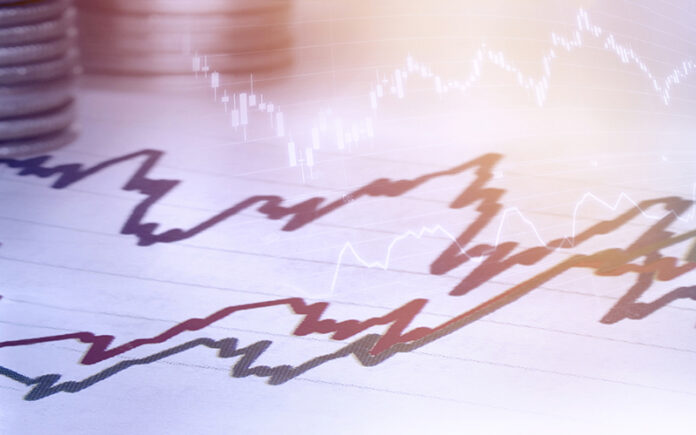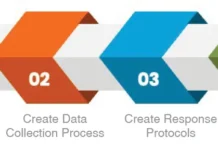By Chris Kuehl, managing director, Armada Corporate Intelligence
By now, every commodity category one can think of has been experiencing dramatic price hikes. Oil is trending above $80, natural gas prices surged by over 500%, steel was up by 216% and during the summer the price of lumber hit record levels. To some degree, this surge was anticipated but the extent of the price hike has been taking many user sectors by surprise.
The burning questions are how high do these prices go and how long does all this price inflation last? As any good economist would assert – it depends. There are three broad factors to consider when trying to forecast what happens next. The first is why these prices spiked so high to begin with. The second is how the consumers are responding to the higher costs, and the third is what would cause production and consumption to even out and allow prices to fall.
The root cause of the issue is not hard to determine. The pandemic-inspired shutdown of the entire world economy shattered demand for the better part of a quarter (Q2 and part of Q3 in 2020). This destruction of the global economy was made far worse by the fact that there was no way to prepare for it. This was a recession by edict and came as most companies were preparing for a pretty good growth year. The world had not dealt with a challenge like COVID-19 before and there were plenty of miscalculations. Few thought the lockdowns would last longer than a few weeks, but they dragged on for months. This left producers with billions of dollars of unwanted inventory.
Not only were they shutting down operations due to the pandemic restrictions, but they also saw little demand for the product they had and saw no reason to produce more. This would have been bad enough but scarcely a year later there was another unexpected development. Consumers came out of the gate in early 2021 as if they were on fire. Growth in the second quarter started at a blistering 9.5% pace and ended up at 6.5% (over twice what is normally seen in terms of US GDP growth). The demand for nearly every commodity grew at the same pace. Producers have been struggling to catch up all year, but each process has been more complex than usual.
Demand has not been as consistent as would be preferred. Office building construction has been hampered by the fact that only about a third of employees have returned to their old patterns and that has meant less interest in this kind of construction. Given that construction is the single largest consumer of steel, there has been trepidation among those producers. Machinery, however, has seen substantial growth. Shortages that have plagued the automotive sector have had an impact on demand as well. The fact is that demand has grown but the potential for decline in that demand has been inhibiting producers. They do not trust the demand they have been seeing as the potential still exists for a consumer pullback if there are further outbreaks of the virus.
The second factor is how consumers are reacting. In normal years, the spike in the prices would have halted consumption in its tracks. Companies would be unwilling or unable to pay these costs or would be concerned about the ability of their consumers to absorb these hikes. National polls indicate that 40% of companies will raise their own prices to cope with the increased costs they face, guaranteeing inflation will continue building.
Inflation usually comes under control when these prices get so high that people can’t, or won’t, pay them. This time, however, there is another wrinkle. The 2020 recession provoked the usual response – throw money at consumers so that they spend the economy out of the doldrums. That didn’t really work this time as consumers were limited in terms of what they could spend. The stimulus essentially accumulated rather than making its way through the system. At the start of the summer, it was estimated there was over $7 trillion in excess savings in the world – meaning that people and businesses complained vigorously about the higher prices but had the ability to pay them anyway. Until this bubble in the supply of cash dwindles significantly there will be more tolerance for higher prices.
Four primary business sectors have all reacted somewhat differently. The construction sector has either stalled completely (office buildings) or roared ahead despite the high prices (warehousing, distribution centers and the like). The primary issue has been availability of commodities like steel – there have been waits as long as a year for the materials needed to complete these projects. The second most important market has been the vehicle manufacturers – everything from cars and trucks to farm equipment and heavy equipment. We all know the drill here – shortages of everything from chips to assemblies have forced plants to close for periods of time and reduced the demand for the other products that go into these sectors. The third area has been booming — machinery.
There has been a surge in capital spending in many sectors of manufacturing as companies make up for lost time and react to the new demand. Finally, there is the oil and gas business, and that growth pattern may start to reverse soon. The demand had been down as concerns regarding the new rules and regulations affecting fossil fuel have been proposed. Will the pursuit of green affect pipeline development? Several large projects have been abandoned already and others have been threatened. On the other hand, the surging price of oil and gas has spurred a renewed interest in developing these resources.
The bottom line is that there is demand from a variety of sectors but at the same time there are concerns regarding how long this demand will hold. Production could ramp up to address the current environment and leave the producers back in the same boat they were in the spring of 2020.
Consumers are now starting to see a real impact on their own budget as these prices work their way into the retail environment. Food and fuel prices reacted right away and there has been shock at the pump prices as well as the costs in the grocery store. The holiday spending season is expected to be solid as consumers come out of hibernation, but that growth will be tempered by the rise in prices. The shattered supply chain, combined with the higher commodity prices, will drive the real rate of inflation past 5.5%.
That brings us to the most important question of all: When does all this end? What will cause prices to fall and how far do they go when they start to? If one looks at the behavior of prices for the last decade, it becomes obvious that volatility has been the norm. There have been many episodes of higher prices followed by big plunges. The demand spikes and producers react with an attempt to meet that demand and invariably end up overproducing and prices react accordingly. So, what will make that demand start to flag? It already has as far as construction is concerned. Even though there has been a major improvement in the development of transportation-related construction, the expectation for office building is not encouraging. Only about 33% of people have returned to their offices and estimates hold that roughly half of employees will remain in a virtual environment for the next several years (at least).
It will take a combination of factors to ease the inflation threat. Demand will have to even out so that producers have an opportunity to catch up. The very existence of inflation will help do that as prices will become too high for many to pay, but with all the excess cash sloshing around in the system that point may not be reached as quickly as usual.
Producers will have to gear up to meet demand, but they face a lot of uncertainty. If demand doesn’t hold, they get stuck with inventory again. They are further inhibited by the supply chain breakdowns. Everyone sincerely hopes that 2022 will be the year that something approaching normal arrives but many thought that 2021 would be that year. The best guess at this stage is that price pressures begin to ease by the end of second quarter of 2022. That still means more than six months of higher prices and scarcity.
Chris Kuehl is managing director of Armada Corporate Intelligence. Founded by Keith Prather and Chris Kuehl in January 2000, Armada began as a competitive intelligence firm, grounding in the discipline of gathering, analyzing and disseminating intelligence. Today, Armada executives function as trusted strategic advisers to business executives, merging fundamental roots in corporate intelligence gathering, economic forecasting and strategy development. Armada focuses on the market forces bearing down on organizations. For more information, visit www.armada-intel.com.





